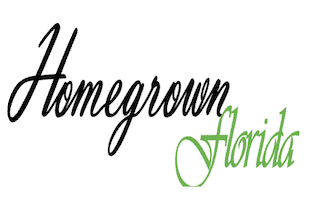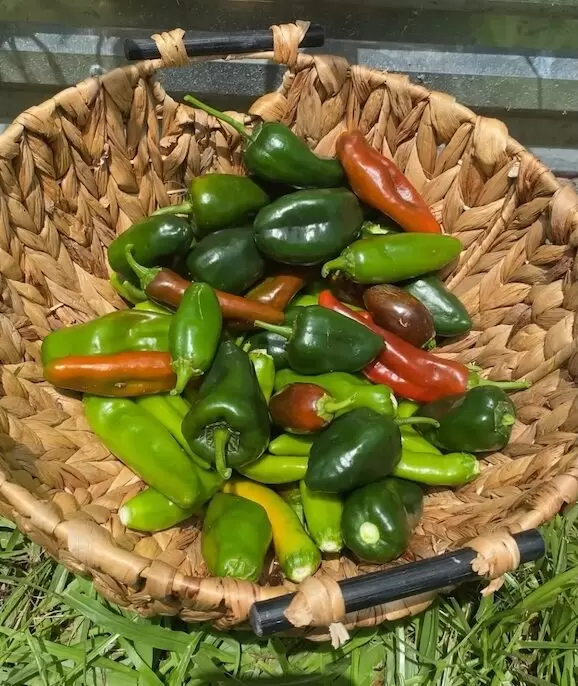Last Updated on May 22, 2025 by Homegrown Florida
Not everything you grow in the garden is going to save you money. And that’s okay—there are lots of good reasons to garden besides budgeting. But if you are looking to be more budget-conscious with your garden, it helps to know which crops that save money to give you the best return for your time, space, and setup costs.
After a decade of gardening in Florida, I finally sat down and did the math—looking at average yields, local grocery store prices (conventional, not organic), and the basic costs of setting up a garden bed. Some crops came out clear winners, while others… not so much.
Let’s walk through what’s actually worth growing if you’re trying to save money—and what you might want to skip.
Table of Contents
This post may contain affiliate links. Read full disclosure here.
Crops That Save Money
Tomatoes

- Yield: 10–30 lbs per plant.
- Grocery Price: Approximately $2.55 per pound.
- Cost Analysis: Growing 32 plants in an 8×4 ft bed can yield 360–960 lbs. This translates to a value of $816 to $2,448. After accounting for the initial setup cost of approximately $221, the savings are substantial.
Peppers
- Yield: 5–10 peppers per plant.
- Grocery Price: $1.48–$1.72 per pepper.
- Cost Analysis: A full bed of 32 plants could yield 160–320 peppers. That’s a total value of $236–$550, depending on the types of peppers grown. Subtracting the initial setup cost, growing peppers can offer significant savings, especially with high-yielding varieties.
Green Beans (Pole Variety)

- Yield: 1–2 lbs per plant for bush, more for pole.
- Grocery Price: $1.82 per pound.
- Cost Analysis: A bed of 32 pole bean plants could yield significantly more than 64 lbs. Even conservatively estimating 64 lbs, that’s about $116 worth of beans. While the savings may not be as high as other crops, growing pole varieties can increase yields, making them more cost-effective.
Sweet Potatoes
- Yield: 3–5 lbs per plant.
- Grocery Price: $1.18 per pound.
- Cost Analysis: A full bed could yield 96–160 lbs, worth around $113–$189. While that’s not enough to pay off the initial setup in the first season, sweet potatoes thrive in Florida soil with minimal inputs. Once established, they can be propagated from slips year after year, reducing the need for additional investment. Over time, this can lead to significant savings and a continuous supply.
Herbs

- Yield: About 1 lb per square foot per year.
- Grocery Price: $3.55 per ounce ($56.80 per pound).
- Cost Analysis: An 8×4 ft bed could grow 32 lbs of herbs, worth over $1,800. Even with a modest herb garden, growing your own is hands-down the most cost-effective option—especially for perennial herbs like oregano, thyme, and rosemary, oregano, and rosemary can be harvested multiple times a year. Starting from seeds or small plants, especially perennials, can lead to significant savings over time.
Crops That Might Not Be Cost-Effective
Potatoes
- Yield: 3–5 lbs per plant.
- Grocery Price: $0.98 per pound.
- Cost Analysis: An 8×4 ft bed yields 96–160 lbs, equating to $94–$156 in store value, which doesn’t offset the $221 bed setup cost.
Carrots

- Yield: 1–2 lbs per square foot.
- Grocery Price: $1.26 per pound.
- Cost Analysis: Total yield value ranges from $40–$80, falling short of covering setup expenses.
Cabbage

- Yield: 1–3 lbs per plant.
- Grocery Price: $0.96 per pound.
- Cost Analysis: Even with optimal yields, the maximum value is around $92, not enough to recoup initial costs.
Corn
- Yield: 1–2 ears per plant.
- Grocery Price: $0.75 per ear.
- Cost Analysis: An 8×4 ft bed yields 128–256 ears, worth $96–$192, which doesn’t cover the $221 setup cost. Additionally, corn requires significant space and nutrients.
Making Gardening More Cost-Effective
To maximize savings, consider the following strategies:
- In-Ground Gardening: Utilize existing soil to eliminate the need for raised beds and purchased soil.
- Recycled Materials: Use reclaimed wood, bricks, or other materials to build garden structures.
- Composting: Create your own compost from kitchen scraps and yard waste to enrich soil naturally.
- Mulching: Apply organic mulch to retain moisture, suppress weeds, and improve soil health.
- Seed Saving: Collect seeds from your plants to reduce the need for purchasing new seeds each season.
- Water Conservation: Implement drip irrigation or rainwater harvesting to reduce water usage.
Beyond the Budget: Why People Garden
While cost savings are a significant benefit, many people garden for other reasons:

- Health and Nutrition: Freshly harvested produce is often more nutritious and free from harmful chemicals.
- Physical Activity: Gardening provides moderate exercise, promoting overall health.
- Mental Well-being: Tending to plants can reduce stress and improve mood.
- Environmental Impact: Growing your own food reduces carbon footprint and promotes sustainability.
- Community and Connection: Gardening can foster a sense of community and shared purpose.
For a comprehensive guide on gardening in Florida, including detailed information on various crops, planting techniques, and maintenance tips, check out my book, Homegrown Florida Gardening Guide. Happy gardening!



